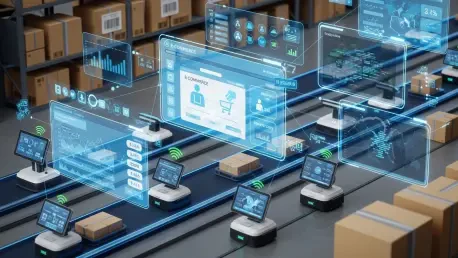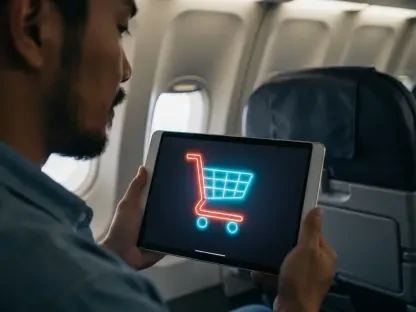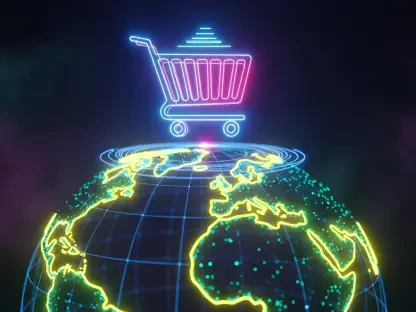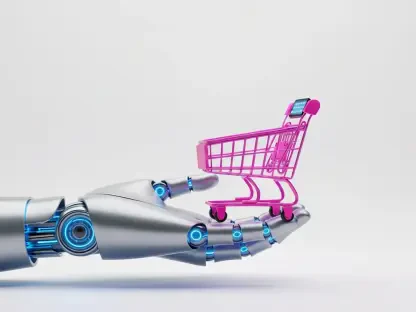Imagine an e-commerce landscape where merchants juggle countless orders daily, drowning in manual tasks like generating shipping labels and updating customer statuses, losing hours and resources to inefficiencies. This scenario, all too common for many online businesses, highlights a critical need for streamlined operations in a digital commerce space that continues to grow at an unprecedented pace. SHOPLINE, a prominent e-commerce platform, has stepped up to address this challenge through its innovative logistics automation solutions, particularly via a strategic partnership with Alloy Automation. This review dives into how this technology is reshaping merchant workflows and positioning SHOPLINE as a leader in scalable commerce tools.
Key Features and Innovations in SHOPLINE’s Automation Suite
ShipStation Integration for Effortless Order Management
At the heart of SHOPLINE’s logistics automation lies its seamless integration with ShipStation, a tool designed to simplify order fulfillment. This connection automates the syncing of order and fulfillment data, ensuring that critical updates flow effortlessly between systems. Merchants no longer need to manually input shipping details or track order statuses, a process that previously consumed significant time and effort.
The impact of this automation is striking, with projections estimating that merchants can save over 1,500 hours annually, translating to roughly $40,000 in labor costs. Such savings allow businesses to redirect resources toward growth-oriented activities like marketing and product development. This integration stands out for its real-time functionality, ensuring that data remains current and actionable, thus enhancing decision-making for shop owners.
Beyond time and cost benefits, the ShipStation integration reduces human error in fulfillment processes. By automating repetitive tasks, it minimizes mistakes in shipping labels or customer notifications, fostering trust and reliability in merchant operations. This feature exemplifies how targeted automation can deliver immediate value in a competitive market.
Alloy Automation’s Embedded iPaaS Platform Powerhouse
Another cornerstone of SHOPLINE’s technological advancement is its collaboration with Alloy Automation, leveraging a global embedded iPaaS (Integration Platform as a Service) platform. Alloy’s extensive library of prebuilt connectors enables SHOPLINE to integrate with various third-party tools swiftly and efficiently. This capability marks a significant shift from traditional integration methods that often required weeks of engineering work.
The speed of deployment is a game-changer, allowing SHOPLINE to roll out new integrations in mere hours. This rapid pace not only alleviates the burden on engineering teams but also ensures that merchants gain access to the latest tools without delay. The flexibility of this platform empowers SHOPLINE to tailor solutions to specific merchant needs, enriching its app marketplace with diverse offerings.
This technological backbone also supports scalability, enabling SHOPLINE to adapt to evolving market demands. As new tools and services emerge, the iPaaS platform positions the company to integrate them seamlessly, maintaining a competitive edge. This adaptability underscores a forward-thinking approach to e-commerce logistics.
Performance Benefits for Diverse Merchant Needs
SHOPLINE’s logistics automation tools are not confined to a single industry or business model; they cater to a wide array of merchants, from small startups to established enterprises. The ShipStation integration, for instance, has proven instrumental in enhancing operational efficiency by providing real-time data syncing. This ensures that merchants can respond promptly to customer inquiries and order changes, improving overall service quality.
Unique use cases further highlight the versatility of these solutions. Customizable options and API connectivity allow merchants to adapt the platform to specific workflows, whether managing seasonal spikes or handling international shipping complexities. Such tailored applications demonstrate how SHOPLINE addresses niche challenges with precision, setting it apart in a crowded market.
The tangible benefits extend to cost efficiency and scalability as well. By reducing manual workloads, merchants can scale operations without proportional increases in labor costs. This balance of efficiency and adaptability makes SHOPLINE’s automation suite a vital asset for businesses aiming to grow in a dynamic digital commerce environment.
Industry Trends and SHOPLINE’s Strategic Alignment
The e-commerce logistics sector is witnessing a rapid shift toward robust integration ecosystems as businesses demand faster, more connected solutions. SHOPLINE’s partnership with Alloy Automation aligns perfectly with this trend, prioritizing speed and scalability in tool deployment. This collaboration ensures that merchants have access to cutting-edge resources to stay competitive in an increasingly complex landscape.
Leadership from both companies has voiced optimism about the transformative potential of these connected tools. Insights from SHOPLINE executives emphasize the flexibility to serve varied merchant needs, while Alloy Automation leaders highlight the importance of seamless workflows at scale. These perspectives reflect a shared vision of empowering merchants through technology.
This strategic alignment positions SHOPLINE to anticipate and respond to industry shifts effectively. As digital commerce evolves, the focus on rapid integration and merchant-centric solutions will likely define success. SHOPLINE’s proactive stance in this area signals a commitment to leading innovation in logistics automation.
Challenges in Scaling Logistics Automation
Despite its strengths, implementing logistics automation comes with hurdles, particularly in technical integration complexities. Ensuring compatibility across diverse systems and platforms can pose significant challenges, especially for merchants with legacy setups. SHOPLINE and Alloy Automation are actively working to simplify these processes, but initial setup may still require specialized support.
Global market scalability presents another obstacle, as regulatory differences and regional logistics variations can impede uniform adoption. Compliance with international standards and local policies often demands customized solutions, adding layers of complexity. Addressing these barriers remains a priority for SHOPLINE as it expands its footprint worldwide.
Market dynamics, including fluctuating shipping costs and carrier reliability, also influence automation outcomes. While SHOPLINE continues to innovate, external factors can affect merchant experiences. Ongoing efforts to expand the integration ecosystem aim to mitigate such issues, ensuring broader accessibility and resilience in diverse conditions.
Future Directions in E-Commerce Automation
Looking ahead, SHOPLINE’s logistics automation initiatives are poised for further enhancement with planned integrations and innovations. The focus remains on enriching the platform’s offerings, with upcoming tools expected to address emerging merchant pain points. This forward momentum suggests a robust pipeline of solutions tailored to future needs.
The long-term impact on e-commerce merchants could be profound, as automation continues to streamline operations and reduce costs. Enhanced connectivity through API-driven solutions may redefine how businesses manage logistics, fostering greater agility. SHOPLINE’s role in this transformation will likely center on bridging technological gaps for merchants of all sizes.
Industry-wide, the ripple effects of such advancements could reshape digital commerce by setting new standards for efficiency. As SHOPLINE builds on its current successes, its influence on logistics practices may inspire broader adoption of automation. This trajectory points to a future where seamless operations become the norm rather than the exception.
Final Thoughts and Next Steps
Reflecting on this evaluation, SHOPLINE’s logistics automation suite emerges as a pivotal tool for e-commerce merchants, delivering substantial efficiency gains and cost reductions through integrations like ShipStation. The partnership with Alloy Automation proves instrumental in accelerating tool deployment, addressing merchant needs with precision and speed. These achievements mark a significant step forward in simplifying complex workflows.
For merchants and industry stakeholders, the next consideration involves exploring how to leverage these tools for specific operational challenges, such as peak season demands or cross-border logistics. Engaging with SHOPLINE’s expanding app marketplace offers a pathway to access tailored solutions. Additionally, staying informed about upcoming integrations provides an opportunity to anticipate and adapt to new capabilities.
Beyond individual adoption, the broader e-commerce community stands to benefit from advocating for standardized integration protocols, inspired by SHOPLINE’s approach. Collaborative efforts to address regulatory and scalability challenges could further enhance automation’s reach. These actionable steps pave the way for a more connected and efficient future in digital commerce.









